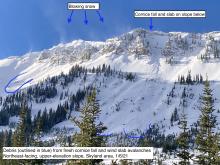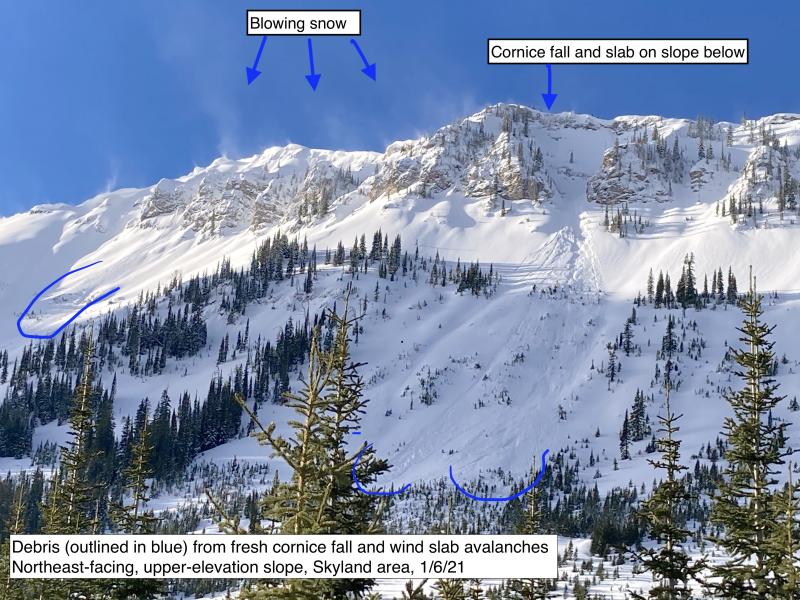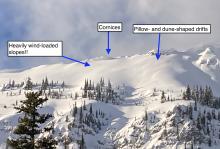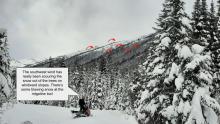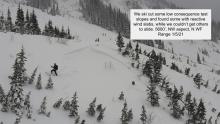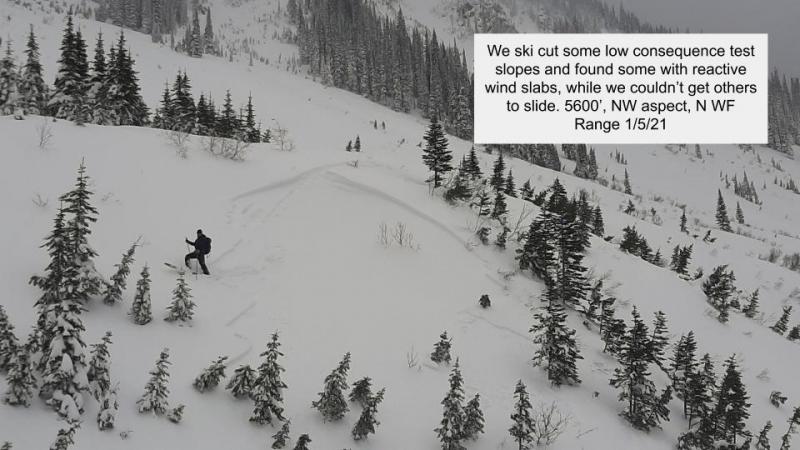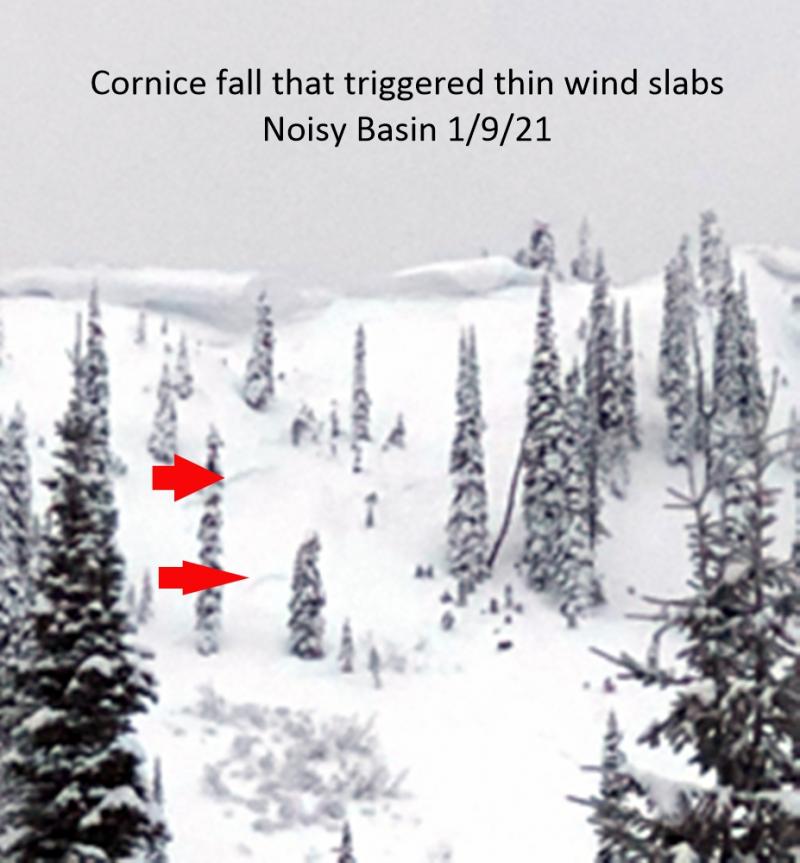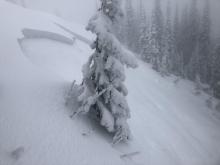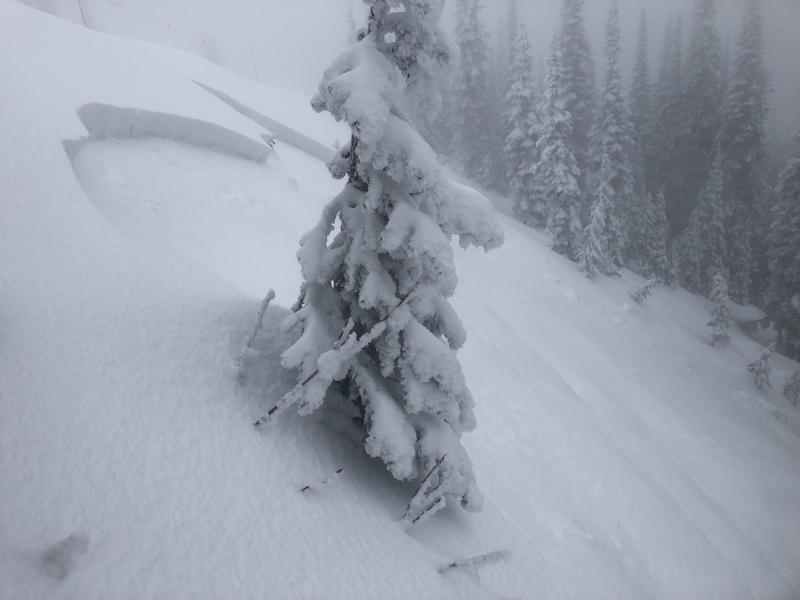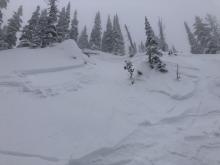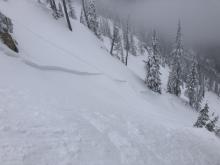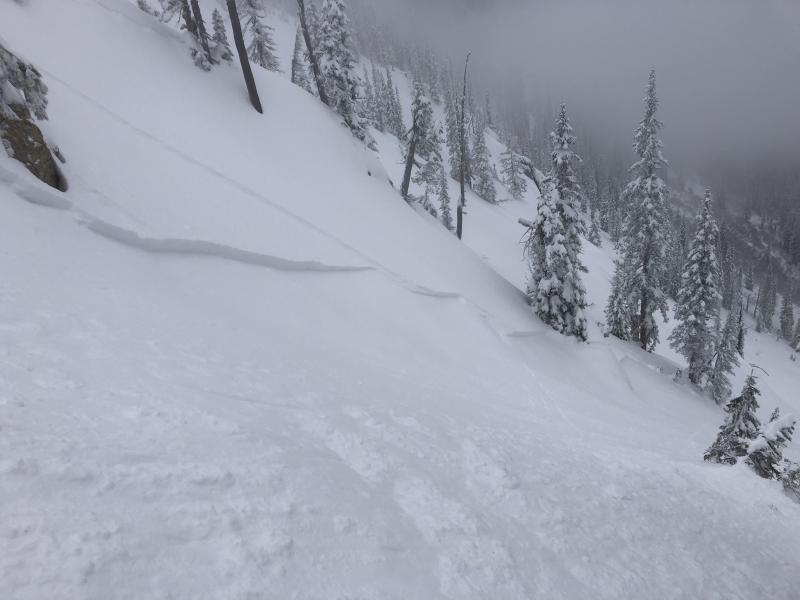| Wednesday | Wednesday Night | Thursday | |
|---|---|---|---|
| Cloud Cover: | Mostly Cloudy | Mostly Cloudy | Mostly Cloudy |
| Temperatures: | 24 to 30 deg. F. | 21 to 25 deg. F. | 25 to 31 deg. F. |
| Wind Direction: | Southwest | South | Southwest |
| Wind Speed: | 16G30 | 17G28 | 22 |
| Snowfall: | 1" to 2" in. | 2" to 4" in. | 4" to 5" in. |
| Snow Line: | 3000' | 3500' | 3000' |
Whitefish Range
Swan Range
Flathead Range and Glacier National Park
How to read the forecast
You can trigger slabs of new and drifted snow near and above treeline today. These slabs will be deepest and break widest on steep, leeward slopes below ridgelines and in chutes. Watch for blowing snow and cracking in rounded drifts. You may trigger small upside-down storm slabs on steep, sheltered break-overs. Shooting cracks in denser snow means you’ve found the hazard. Lower slope angles are the way to avoid triggering avalanches.

2. Moderate
?
Above 6500 ft.
2. Moderate
?
5000-6500 ft.
1. Low
?
3500-5000 ft.
- 1. Low
- 2. Moderate
- 3. Considerable
- 4. High
- 5. Extreme
-
Type ?
-
Aspect/Elevation ?
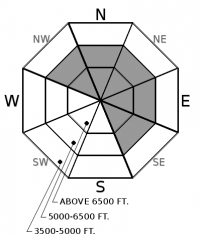
-
Likelihood ?CertainVery LikelyLikelyPossible
 Unlikely
Unlikely -
Size ?HistoricVery LargeLargeSmall

Watch for blowing snow over ridgelines and across gullies. Pay attention to rippled, dense surface snow below cornices and down-wind of saddles and trees. These are signs that you’re dealing with wind slabs, the biggest problem of the day. Stiffer snow that cracks around you and your machine means you’re already on an unstable slab. Drifts can be 12” thick below high elevation ridges. Smaller slabs further down slope can be dangerous if they take you into a terrain trap. Sticking to lower-angled slopes sheltered from the wind is the way to avoid the problem.
-
Type ?
-
Aspect/Elevation ?

-
Likelihood ?CertainVery LikelyLikelyPossible
 Unlikely
Unlikely -
Size ?HistoricVery LargeLargeSmall

In wind-sheltered terrain, the new snow is upside-down and may break into small storm slabs on steep slopes, or near convexities. Feel for denser over softer snow. Use small test slopes to track how deep these slabs are and how well they are bonding to the crust below. Even small slabs can be dangerous if they carry you into obstacles or into a deep gully where the debris can pile up.
2 to 4 inches of new snow fell yesterday on top of a rain crust. Moderate winds created soft slabs on exposed leeward slopes above treeline. Yesterday afternoon in the Swan Range we could trigger small wind slabs and sluffs that ran on top of the crust. We also noted the storm snow beginning to settle and crack as a slab in sheltered areas. Another 1 to 2 inches fell overnight and similar accumulations are expected this morning. The wind continues to blow at upper elevation weather stations across the forecast area. So, slabs that began forming late yesterday should be bigger and more widespread today.
I expect the primary hazard today to be storm instabilities where the new snow and drifts are deepest above the rain crust. So far, the northern Whitefish Range and the Flathead Range have gotten the most new snow. The Swan Range is forecast to get the most new snow today. There is very weak snow under the rain crust, and if a larger avalanche breaks through, it could step down to that layer and entrain more snow. I don’t know if the most recent rain crust exists in the Flathead Range or in Glacier Park. If not, that means that new slabs may be sitting on weak layers of sugary snow above a crust that was buried last week. In areas with that snowpack structure, slabs may be bigger, more reactive, and break wider across the slope.
So, you’ve got 2 things to track today to keep you out of trouble. Gotta walk and chew gum at the same time.
Start with the surface by watching for blowing snow and tracking new snow depths. Where there’s 8 inches or more on top of the rain crust, you’re more likely to trigger a dangerous slab. Pay attention to how well new and drifting snow is bonding to the crust. Use small test slopes and hand pits to see how sensitive the new snow is before you venture onto steep terrain. Stomp on some small rollovers. Ride your machine on a short road cut and see if the snow cracks around you. If so, you know to give steep, and especially leeward, terrain a wide berth.
The next thing to track is the snowpack structure. You’ll have to stop in your tracks or get off your machine and reach into the snow. Is the rain crust buried under new snow? You’ll probably find it if you head to the Whitefish or Swan. Is the surface snow stiffer than a buried sugary layer above an older crust? If you play in the Park or the Flathead, that might be what you find. That structure is scarier. It means that slabs can break wider and further than you’d expect. If it collapses under you, take a step back and be more conservative with your terrain choices.
Our friends at Patagonia are helping us and the Friends of the Flathead Avalanche Center with a special showing of their latest film, Solving for Z. We're stoked to have the heart of the film, Zahan Billimoria, with us to chat about his experience and answer questions from a virtual audience. Join us on Monday, December 21st, from 6:00 to 7:30 MST for this special event. Learn more and get tickets here.
Showers and wind will taper off this afternoon before another Pacific storm brings a second round of widespread snow this evening. Accumulations by tomorrow are expected to be similar to what we've gotten so far: 4 to 6 inches with locally higher amounts in the Swan Range and near Glacier Park.
This forecast applies only to backcountry areas outside established ski area boundaries. The forecast describes general avalanche conditions and local variations always occur. This forecast expires at midnight on the posted day unless otherwise noted. The information in this forecast is provided by the USDA Forest Service who is solely responsible for its content.



